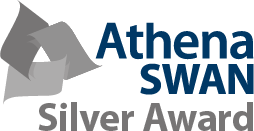Disordered eating, sport and dental professionals
22 October 2020
Professor Ian Needleman on the dentists' role in tackling disordered eating in elite sport.

By Professor Ian Needleman, Professor of Periodontology and Head of the Centre for Oral Heath and Performance
A BBC documentary aired in October 2020, revealed that Disordered Eating (DE) is common in elite sport.
DE is more prevalent in sports where weight and body image are important than perhaps other sports and it is a myth that it is only an issue for female athletes.1
In addition to the serious damaging physical and psychological effects, disordered eating adversely affects oral health. In those with bulimia, the majority of people will lose tooth enamel leading to pain and yellow-looking teeth as the underlying dentine shows through, potentially exacerbating other psychological impacts.
Relative energy deficiency in sport (RED-S) is another increasingly recognised consequence of DE with major harmful metabolic effects and might have the potential to increase the risk of oral diseases.
Dental professionals may be the first to detect DE indeed marathon runner Tom Fairbrother has described how his dentist was key to him seeking support for his two-year eating disorder.2
We have called for action to raise awareness to integrate oral health expertise with sport and exercise medicine and science and performance nutrition.3 We recommend that all elite athletes should see a dental professional twice a year for thorough oral health screening and coaching in tailored preventive advice4. The dental team should be part of the wider support team to promote athlete health and wellbeing.
1. AIS and NEDC position statement on disordered eating in high performance sport
2. Marathon runner Tom Fairbrother and DE
3. Needleman et al. 2018: Nutrition and oral health in sport: time for action.
4. Needleman et al. 2017: Oral health screening should be routine in professional football: a call to action for sports and exercise medicine (SEM) clinicians
 Close
Close




